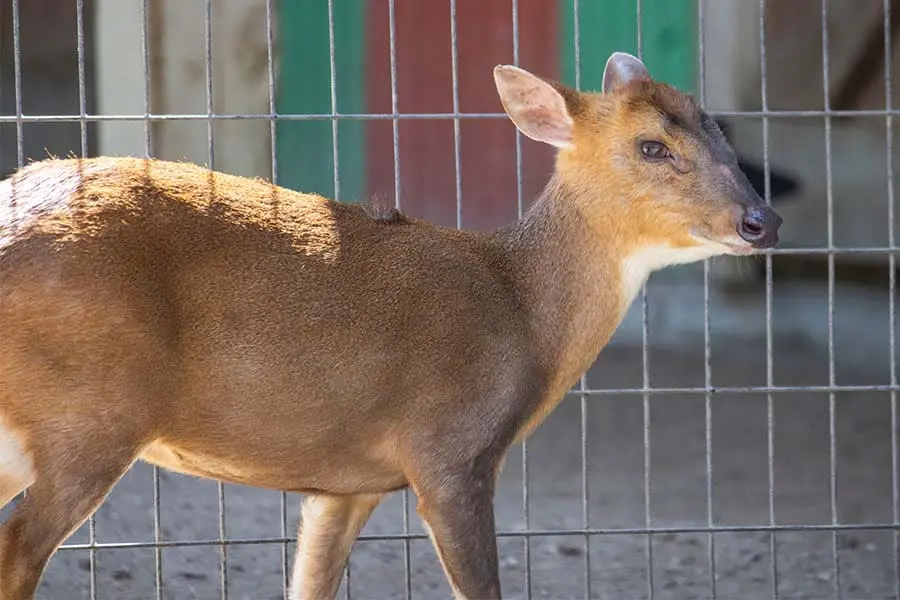

Harriet fits right in!
There’s a new muntjac in town! We recently welcomed 12-year-old Harriet to the Kangaroo Walkabout in our Lands of Change: Australia and Beyond section of the Zoo. We hope that her arrival will lead to the first offspring of this species born at the Zoo since 2003!
Harriet’s arrival is based on a breeding recommendation by the Association of Zoos and Aquariums’ Species Survival Plan (SSP) for Reeves’s muntjacs. She comes to us from another AZA-accredited zoo. She has been recommended to breed with 13-year-old male Kirby, who has lived at our Zoo since 2019.
Because Harriet had a full exam at her previous Zoo, she did not need to undergo a quarantine period before meeting her new roommates. She will live in the Kangaroo Walkabout with mate Kirby, 16 red kangaroos, three emus and an African spurred tortoise. At her previous zoo, she lived with several other species, so we are confident that introductions between her and our other Walkabout residents will be positive.
Neither Harriet nor Kirby have had offspring before. In fact, the last time that we had baby muntjacs at the Zoo was 20 years ago! One of those offspring, Wonton, still lives here at the Zoo in our lorikeet aviary.
Because our Walkabout habitat is so large, it may be difficult to spot Harriet right away. Staff at her previous zoo noted that she can be skittish, but tends to be curious and quick to investigate new objects in her surroundings.
Reeves’s muntjacs typically give birth to one or two young after a seven-month gestation period. This species of small deer is native to forests in Asia. While males like Kirby and Wonton grow antlers, females like Harriet do not! This is an easy way to identify our newest member of the Walkabout.
On your next visit to the Zoo, see if you can spot Harriet exploring her new home!
Brevard Zoo is an independent, not-for-profit organization that receives no recurring government funding for our operating costs. Your generous support enables us to continue to serve our community and continue our vital animal wellness, education and conservation programs.